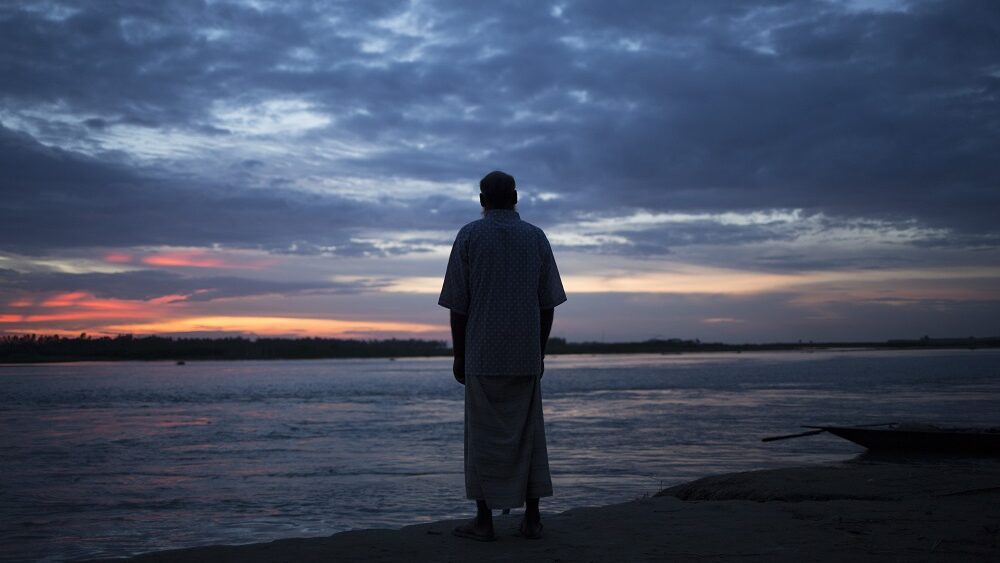Statement by Prof. Walter Kaelin, Envoy of the Chair of the Platform on Disaster Displacement on the occasion of the event “The Road from COP26 to the International Migration Review”
24 February 2022
The title of today’s event is “The Road from COP26 to the International Migration Review”. Taken literally, the image of a road suggests that climate change and migration are two policy areas that are well connected with each other. Internally, however, the organizers of this event called it the “Bridge Webinar”. The image of a bridge evokes certain difficulties. It suggests that we may only be able to cross the gap between the climate change negotiations and the follow-up to the Global Compact for Safe, Orderly and Regular Migration (GCM) if we invest in connecting the two bridgeheads.
Whether or not we view the United Nations Framework Convention on Climate Change (UNFCCC) processes and negotiations and the international discussions on migration as two distinct policy areas that are difficult to bring together, it is clear that the challenge we face is complex. In fact, it took sixteen Conferences of Parties (COPs) to the UNFCCC to formally recognize, in paragraph 14(f) of the 2010 Cancun Adaptation Framework, that displacement, migration, and planned relocation in the context of adverse effects of climate change are a reality. At the global level, migration officials and experts were even slower to convince heads of state and government that people may migrate or be compelled to move in response to the adverse effects of climate change and to include this acknowledgement in the 2016 New York Declaration for Refugees and Migrants.
Since then, much has happened. In 2018, the GCM was adopted with many references to human mobility and migration in the context of climate change and disasters. Under GCM Objective 2 on minimizing the adverse drivers that compel people to leave their country of origin, we find a long list of recommended actions. They include, among others, using climate change adaptation measures to prevent displacement, or considering the 2015 Nansen Initiative Protection Agenda[1] and the work of our Platform on Disaster Displacement. Under GCM Objective 5 on enhancing availability and flexibility of pathways for regular migration, States are encouraged to use tools such as humanitarian visas, temporary protection, or temporary work permits to admit people displaced in the context of sudden-onset disasters and to allow them to stay until return becomes possible. States are also encouraged to find solutions for migrants compelled to leave their countries of origin owing to slow-onset processes such as desertification, drought, and sea level rise and to admit them permanently ‘in cases where adaptation in or return to their country of origin is not possible.’ With its references to adaptation, the GCM imports a climate policy notion into a migration instrument and thus in fact builds a bridge between migration and climate change policy dialogues.
Bridge-building happened also on the side of the delegations participating in the climate change negotiations. COP24 in Katowice, Poland, welcomed the report of the Task Force on Displacement established under the Warsaw Mechanism on Loss and Damage by the COP decision that gave effect to the 2015 Paris Agreement and invited States and other stakeholders to “consider” its recommendations, “as appropriate”, including the one “to facilitate orderly, safe, regular and responsible migration” and enhance “opportunities for regular migration pathways.”
Where do we stand today? And what does this mean for the forthcoming International Migration Review Forum?
Firstly, the negotiated messages on both sides of the bridge can be considered to be breakthroughs if compared to what we had ten years ago. At the same time, terms such as “consider … as appropriate” indicate that the emerging consensus of States is still fragile. Despite progress made, implementation remains limited. Overall, we might still be rather far away from a satisfactory degree of protection of people compelled to leave their country in climate change and disaster contexts.
Secondly, however, real progress exists. Due to time constraints let me limit myself to the question of pathways for people compelled to leave their countries in climate change and disaster contexts. Such pathways already exist. Some countries, particularly in the Southern Africa, often admit people in disaster situations until return becomes possible based on ad hoc decisions. Temporary refuge provided by neighbouring countries for victims of floods in Mozambique is a good example.
Other countries have formalized such hospitality. They have, and implement, domestic legislation that provides for humanitarian visas or temporary protection for people displaced across borders in disaster-contexts. While migration authorities have discretion when deciding to use such tools for admission and stay, countries in Central and South America – where such legislation is often used – have adopted guides and guidelines to harmonize their approaches. Domestic immigration quotas for people from climate vulnerable countries providing for long-term or permanent residence would be another important tool, but they hardly exist today. In this regard, the development of regional human mobility frameworks as presently discussed in the South Pacific region, may provide opportunities to make some progress.
Furthermore, there is growing recognition that bilateral or regional agreements on the free movement of persons have a huge potential to provide people anticipating or affected by adverse impacts of climate change and disasters with regular migration pathways. Such agreements serve economic purposes, but in some parts of the world, for instance in Africa’s Economic Community of West African States (ECOWAS) region, they have allowed affected people to find refuge in other countries, access employment there, and thus to some degree help themselves. In the Horn of Africa, the recently finalized Protocol on Free Movement of Persons of the Intergovernmental Authority on Development (IGAD) region explicitly provides that people who are moving in anticipation of, during, or in the aftermath of disasters can enter the territory of another Member State and stay there.
Thirdly, while multiple tools to admit and protect people displaced across borders exist, the glass is not only half full, it is also half empty. Whether States use tools such as humanitarian visas, temporary protection or immigration quotas, or are ready to adapt free movement agreements to today’s realities of climate change, is hardly predictable and still not widespread. And other States refrain from doing so. Therefore, it is important to use our voices to keep climate change-related displacement and migration high up on the agenda of the IMRF where this topic will compete with many other priorities. During the IMRF, it is also important to reiterate, strengthen and further refine the commitments and recommendations under Objectives 2 and 5 of the GCM, and to reflect these outcomes in the resulting Progress Declaration that will guide GCM implementation until the next forum.
Finally, these outcomes have to be brought back to COP27 taking place in Egypt later this year. Within the climate change negotiations, there is growing recognition, supported by evidence such as that provided by the IPCC, that in many instances and regions we have reached the limits of climate change adaptation, and that we need to prepare for even more loss and damage, such as displacement within countries and across international borders. Discussion and decisions on the institutional arrangement of the Santiago Network on loss and damage at COP27 will be important, as well as finding better ways to scale up and strengthen action and support for vulnerable countries to avert, minimize and address displacement. Finally, we all can do more to promote the adoption and systematic implementation of existing tools for admission and stay of people compelled to seek protection and opportunities due to the effects of climate change and disasters.





